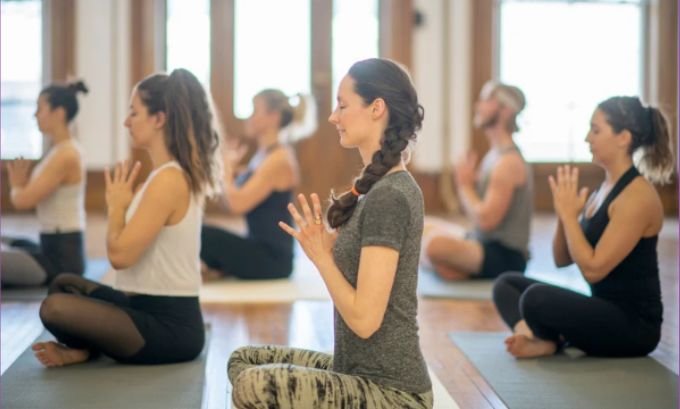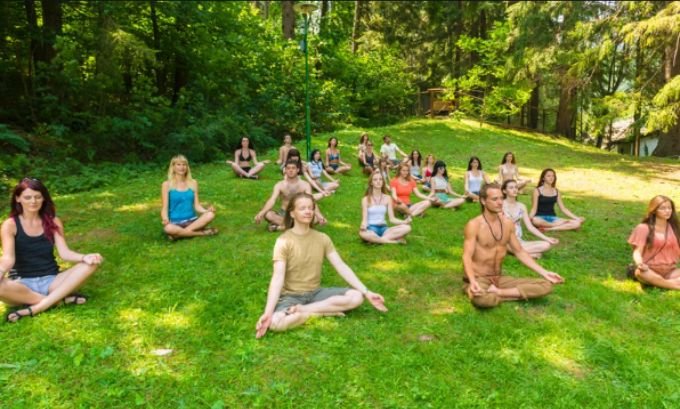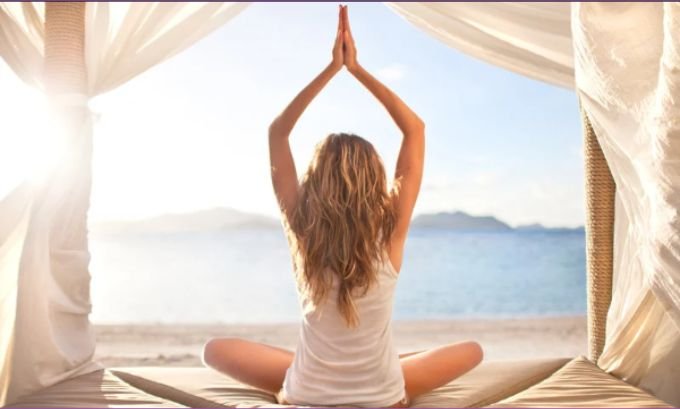If you’ve ever felt intimidated by the idea of yoga, you’re not alone. For many, the word conjures images of pretzel-like poses and serene, impossibly flexible people. While that’s one small part of it, the reality is much more accessible and profound. Yoga is a versatile practice that has been adapted over thousands of years, offering benefits that extend far beyond physical fitness.
This guide will demystify yoga, explaining what it is, where it comes from, and how you can get started. We’ll explore the different styles you might encounter and break down the core components that make yoga a holistic practice for the mind and body. By the end, you’ll have a clear understanding of what yoga offers and how to begin your own journey.
Table of Contents
The True Meaning of Yoga
At its core, yoga is an ancient practice that originated in India over 5,000 years ago. The word “yoga” comes from the Sanskrit root “yuj,” which means “to unite” or “to join.” This refers to the union of the individual consciousness with the universal consciousness, but on a more practical level, it signifies the connection between mind, body, and spirit.
While modern yoga in the Western world often emphasizes physical postures (asanas), this is only one of the eight traditional “limbs” of yoga. The practice is a comprehensive system for well-being that also includes:
- Ethical principles (Yamas and Niyamas)
- Breathing techniques (Pranayama)
- Concentration (Dharana)
- Meditation (Dhyana)
Together, these elements work to cultivate awareness, reduce stress, and promote physical health.

The Pillars of a Yoga Practice
A typical yoga class integrates several key components. Understanding these pillars can help you feel more prepared and get more out of your experience.
Asanas (Physical Poses)
Asanas are the physical postures that most people associate with yoga. These poses are designed to build strength, increase flexibility, and improve balance. Poses can range from simple seated positions to challenging arm balances. The goal is not to achieve a “perfect” shape but to find a version of the pose that works for your body, using props like blocks or straps to provide support.
Pranayama (Breath Control)
Pranayama involves various breathing exercises that help regulate the flow of prana, or life force energy, in the body. By consciously controlling the breath, you can influence your mental and emotional state. Deep, mindful breathing can calm the nervous system, reduce anxiety, and improve focus. Many classes begin or end with a short pranayama practice.
Dhyana (Meditation and Mindfulness)
Meditation is a practice of focused concentration that brings you to a state of heightened awareness. In yoga, meditation helps quiet the constant chatter of the mind. This can be done by focusing on the breath, a mantra, or bodily sensations. Even the final resting pose in most yoga classes, Savasana (Corpse Pose), is a form of meditation designed to integrate the benefits of the physical practice.
Common Styles of Yoga for Beginners
With so many different types of yoga available, finding the right one can feel overwhelming. Each style offers a unique focus and pace. Here is a breakdown of some of the most popular styles suitable for those new to the practice.
| Yoga Style | Pace & Intensity | Key Focus | Best For Beginners Who… |
|---|---|---|---|
| Hatha | Slow & Gentle | Basic postures and breathing techniques. | Want a classic, gentle introduction to the fundamental poses. |
| Vinyasa | Moderate to Fast | Flowing, dynamic movements synchronized with breath. | Enjoy a more active, fitness-oriented class and don’t mind a faster pace. |
| Yin | Very Slow | Long, passive holds (3-5 minutes) to target deep connective tissues. | Are looking to increase flexibility and cultivate stillness and patience. |
| Restorative | Very Slow & Gentle | Using props (bolsters, blankets) to fully support the body in restful poses. | Need deep relaxation, stress relief, and a very gentle practice. |
| Iyengar | Slow & Precise | Strong focus on proper alignment and the use of props. | Are detail-oriented and want to learn the precise mechanics of each pose. |
Trying a few different styles is the best way to discover which one resonates most with you. Many studios offer introductory classes or beginner-friendly series that allow you to explore various approaches.
Getting Ready for Your First Class
Ready to give yoga a try? Here are a few simple tips to help you feel confident and prepared for your first session.
- Wear comfortable clothing: Choose stretchy, breathable clothes that allow you to move freely without feeling restricted.
- Don’t worry about being “good” at it: There is no competition in yoga. The focus is on your personal experience, not on how your poses look compared to others.
- Communicate with your instructor: Let the teacher know you’re new before class starts. They can offer modifications and extra guidance to ensure you have a safe and positive experience.
- Listen to your body: This is the most important rule. If a pose causes sharp pain, gently back off. Challenge yourself, but never push into pain.
- Stay hydrated: Drink plenty of water before and after class, but try to avoid drinking too much during the session itself.

Frequently Asked Questions
What do I need to start practicing yoga?
All you really need is a yoga mat and comfortable clothing. Many studios provide mats and props for rent or for free. As you continue, you might want to invest in your own mat, blocks, or a strap.
Do I need to be flexible to do yoga?
No, you do not need to be flexible to start yoga. In fact, saying you’re “not flexible enough for yoga” is like saying you’re “too dirty to take a shower.” Flexibility is a result of the practice, not a prerequisite for it.
How often should I practice yoga to see benefits?
Even practicing once a week can bring noticeable benefits. However, a consistent practice of 2-3 times per week will likely lead to more significant improvements in strength, flexibility, and mental clarity. The most important thing is consistency, not frequency.
Can I practice yoga if I have an injury?
It depends on the injury. It’s crucial to consult with a doctor before starting. If you get the go-ahead, inform your yoga instructor about your injury so they can provide appropriate modifications to keep you safe. Restorative or gentle yoga styles are often a good starting point.
Start Your Journey Today
Yoga is much more than a form of exercise; it is a holistic discipline that fosters a deeper connection between your mind and body. It offers a path to physical health, mental peace, and greater self-awareness. By integrating movement, breath, and mindfulness, yoga provides a powerful toolkit for navigating the stresses of modern life.
The first step is often the hardest, but you don’t have to be perfect to begin. Find a local studio, try an online class, or simply roll out a mat in your living room and start with a few simple stretches. Your journey is your own, and every moment spent on the mat is a step toward a more balanced and centered you.
Looking to start your yoga for beginners journey? Explore high-quality wellness products and accessories at Tokyo Mart to support your practice from day one.


